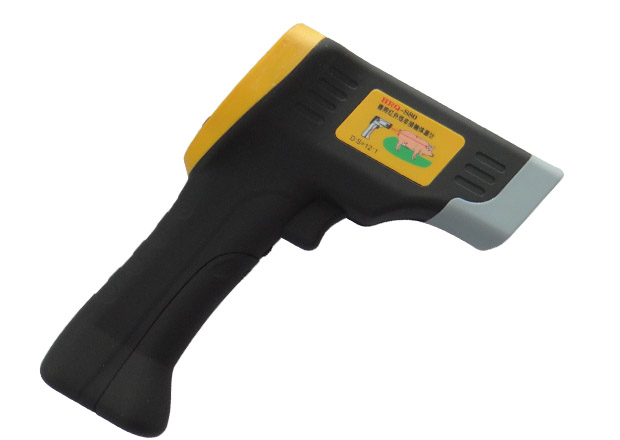Temperature, pressure, current, voltage, etc. are basic physical quantities that people are familiar with. In the industrial field, it has a great impact on product quality, whole process control, etc. Among these basic physical quantities, it is much more difficult to measure and calibrate the temperature. This is because the influence of the "insulation" and "heat transfer" of the temperature system itself is very complex, which results in the large volume of the temperature measurement calibration system, the long stability time required, and the difficulty in improving the accuracy. It is not the same as the pressure system that the internal and external pressure can be increased without mutual influence as long as the pressure transmission pipeline leakage is increased/increased. In this way, it is easy to achieve rapid pressure transmission. The stability time only takes a few milliseconds and the measurement accuracy can easily reach several thousandths of a percent.
Let's take a look at a temperature measurement system with high accuracy and stability. It is impossible to improve/increase its "insulation", that is, to completely prevent heat transfer. People usually make a large enough volume think that the temperature field gradient of a small volume at its internal mass center is sufficiently balanced when it reaches thermal equilibrium, which is one of the important reasons why the volume of the temperature calibration source is huge. In addition, the heat transmission of a temperature system is also very complicated, and it is often completed by heat conduction, convection and radiation. It can be imagined that it is almost impossible to make its temperature suddenly change and reach the thermal balance. This is the conventional temperature calibration source. In order to improve/increase a certain uniformity of the temperature field, the device is large in size, and takes a long time to raise and lower the temperature, The inspection, maintenance and calibration of the temperature measurement system in the industrial field are time-consuming, laborious and expensive, and the reliability of the system is affected due to the repeated disassembly and assembly of the temperature probe.
The industrial field hopes to have a small, light and portable temperature correction source (thermostat) like the pressure calibrator. However, this small and portable temperature calibrator must overcome the disadvantages of poor uniformity and stability of the temperature field caused by the reduction of volume. To make the temperature rise and fall stable in a short time, there must be close cooperation between heating and cooling, It can reduce the heating and cooling time, and the cooling and heating in the miniaturized constant temperature bath also affect the uniformity of the temperature field. Therefore, the portable temperature corrector, which can achieve ultra small volume with a certain accuracy and quickly rise and fall, is a field application instrument that has been eagerly explored and developed in the field of temperature measurement technology for many years.
Infrared detection technology is a key promotion project of scientific and technological achievements in the "Ninth Five Year Plan". Infrared detection is an online monitoring (uninterruptible) high-tech detection technology, which integrates photoelectric imaging technology, computer technology, and image processing technology. It receives infrared (infrared radiation) emitted by objects, displays its thermal image on the fluorescent screen, and accurately judges the temperature distribution on the surface of objects, It is accurate, real-time and fast. Any object, due to the movement of its own molecules, constantly radiates infrared heat energy, thus forming a certain temperature field on the surface of the object, commonly known as "thermal image". The infrared diagnosis technology is to absorb the infrared radiation energy, measure the temperature of the equipment surface and the distribution of the temperature field, and then judge the heating condition of the equipment. There are many test equipment using infrared diagnostic technology, such as infrared thermometer, infrared thermal television, infrared thermal imager, etc. Devices such as infrared thermal television and infrared thermal imager use thermal imaging technology to transform this invisible "thermal image" into visible image, so that the test effect is intuitive, the sensitivity is high, the subtle thermal state changes of the equipment can be detected, and the internal and external thermal conditions of the equipment can be accurately reflected, with high reliability.
Infrared diagnosis technology can reliably predict the early fault defects and insulation performance of electrical equipment, so that preventive test maintenance of traditional electrical equipment (preventive test is the standard introduced from the former Soviet Union in the 1950s) can be improved to predictive condition maintenance, which is also the development direction of modern electric power enterprises. In particular, the development of large units and ultra-high voltage puts forward higher and higher requirements for the reliable operation of the power system, which is related to the stability of the power grid. With the continuous development, maturity and improvement of modern science and technology, infrared condition monitoring and diagnosis technology has the characteristics of long-distance, non-contact, non sampling, non disassembly, and accurate, fast, intuitive, real-time online monitoring and diagnosis of most faults of electrical equipment (it can cover almost all kinds of fault detection of electrical equipment). It is highly valued by the domestic and foreign power industry (an advanced condition based maintenance system widely used in the late 1970s abroad), and has developed rapidly. The application of infrared detection technology is of great significance in improving the reliability of electrical equipment, improving the economic efficiency of operation and reducing the maintenance cost. It is a good means widely used in the field of predictive maintenance, and can also make the maintenance level and equipment health level to a higher level.

